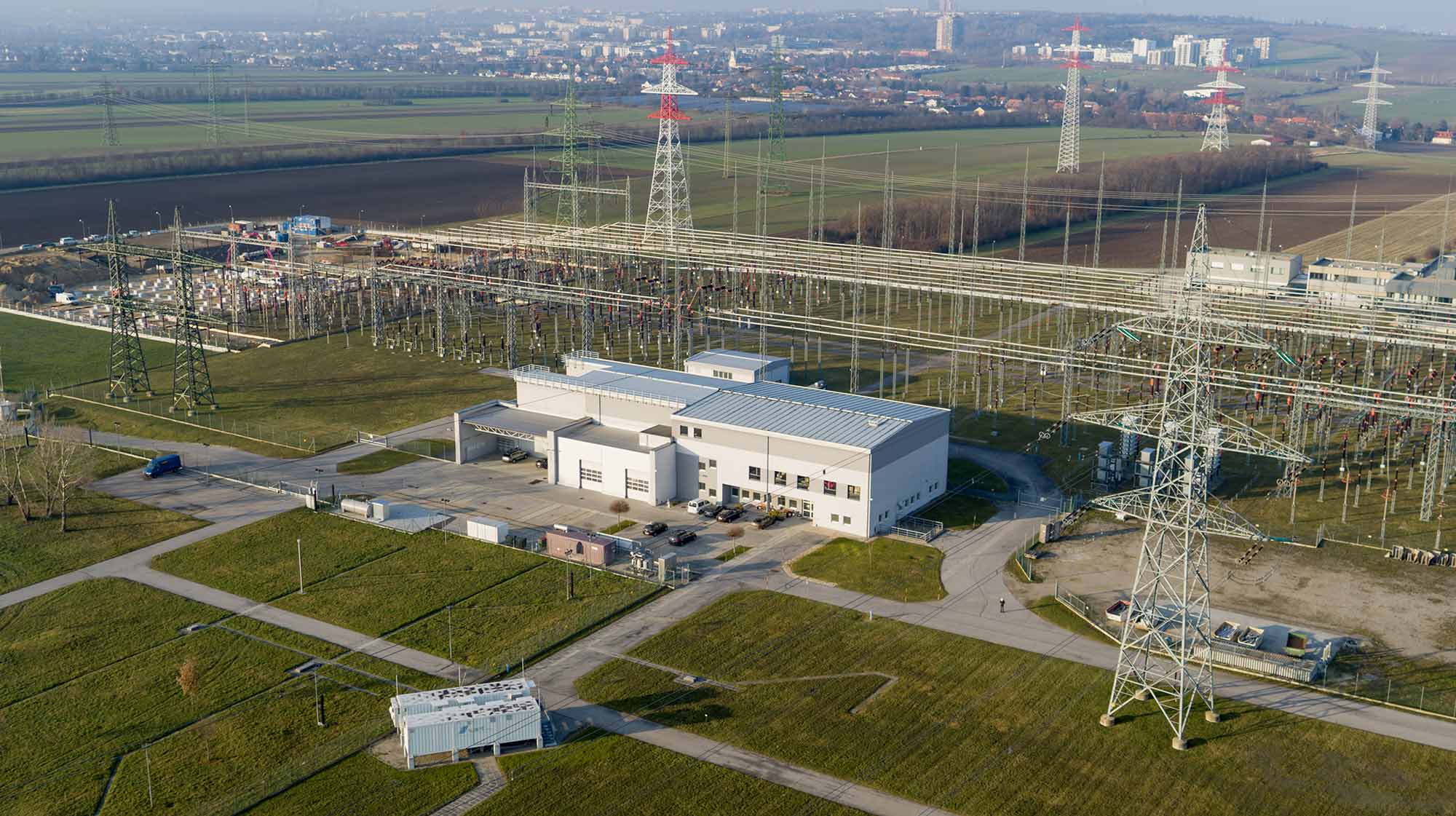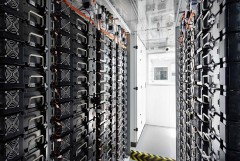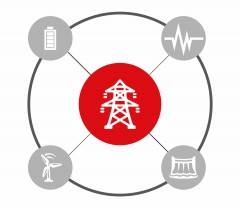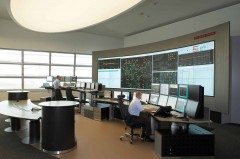
The growing number of renewable energy sources and the increased decentralisation of energy generation mean that our energy networks need to be transformed. The fluctuating power supply from renewable energy sources, such as wind and solar energy, is changing the situation in the transmission and distribution networks fundamentally. In order for the electricity system to function reliably, electricity consumption and generation must be balanced at all times. When the mains frequency is constant at 50 Hertz, this balance is guaranteed and the energy supply is stable.
Transmission and distribution grids per se are practically unable to store energy. Up until now, fluctuations between power generation and consumption as well as minor grid faults and frequency deviations have been compensated in conventional hydraulic and thermal power plants by the large rotating flywheel masses of the turbines. This is called system inertia. In contrast, wind power and photovoltaic power plants are usually connected to the grid through inverters, which means that they do not provide their own natural inertia mass with today’s common control methods, and therefore do not have a frequency-stabilising effect on the system. Due to the conversion of the energy system to renewable energy, more and more conventional power plants are going off the grid and as a result there is less natural inertia mass in the overall system. This is increasingly posing a challenge to the power system.

„We need new grid elements and new mechanisms in the power grid to provide the basis for integrating renewable energy sources and to maintain the current high security of supply. This is precisely where the “ABS for the power grid” project comes in. It shows the ways we could use intelligent storage systems and other fast controllable technologies to stabilise the Austrian and European power transmission grid of the future. The project represents a dynamic system in which the energy transition will succeed and and the security of the power system will be kept.“
Michaela Leonhardt,
Project Leader Austrian Power Grid AG
Intelligent storage capacities as a solution
As part of the ABS4TSO (ABS for Transmisson System Operators) research project, the transmission system operator APG (Austrian Power Grid AG), in cooperation with several project partners1, is investigating innovative approaches to stabilising the power system, ensuring a secure power supply and integrating renewable energy sources. The focus is on the concept of using intelligent battery storage units as well as other fast controllable technologies in order to be able to react very quickly to frequency deviations in the transmission grid, thus keeping the high-voltage system stable. The inertia mass, which has so far been supplied by the rotating generators, could in future be provided virtually by means of battery storage and inverters. ABS stands here for “Advanced Balancing Services”. Like the ABS system in a car, these storage systems could in future take on the task of keeping the system on track in difficult situations.
Test system in Vienna
In order to test this forward-looking concept, a test system was installed at APG’s Vienna Southeast substation in 2019. The heart of the system is a battery storage unit with a capacity of 1 MW and an energy content of 500 kWh. Here, the characteristics of high-dynamic system services, which will be necessary to ensure system stability and security in the future, are being investigated. Battery cell technology based on lithium-ion batteries is already a proven standard. The inverter, on the other hand, had to be specially adapted for the investigations in the high-dynamic range. While the reaction time for standard products is in the range of seconds, the ABS4TSO inverter must react high-dynamically within milliseconds in order to be able to provide virtual inertia mass. As part of this project, research was done in the laboratory on own parameterisation options as well as new additional functions for the inverter, and then simulated, programmed, and finally implemented in the system.
Controlling multiple functions
In the field test, real frequency curves and current grid events are now being used to investigate whether the battery storage unit can stabilise the power system in the same way as the rota-ting masses of conventional power plants do. The goal is for the storage system to perform multiple functions, thus providing high-dynamic services. These include stabilising the frequency by supplying virtual intertia mass, providing high-dynamic control power and damping low-frequency system oscillations. The system should be able to respond to each of these situations as well as to combinations of them. Extensive simulations were carried out in the laboratory beforehand from which specifications for the practical test were then derived.Depending on the research results from the test system, it will then be evaluated which new system services are feasible in practice and can be scaled up for the European transmission grid.
www.energieforschung.at/projekte/1012/advanced-balancing-services-for-transmission-system-operators
www.apg.at/en/projekte/abs4tso
1 PROJECT PARTNERS:
Austrian Power Grid AG (project management), AIT Austrian Institute of Technology GmbH, TU Wien, VERBUND Hydro Power GmbH, VERBUND Energy4Business GmbH, VERBUND AG
A project within the framework of the energy research programme of the Climate and Energy Fund.
www.energieforschung.at
Share



